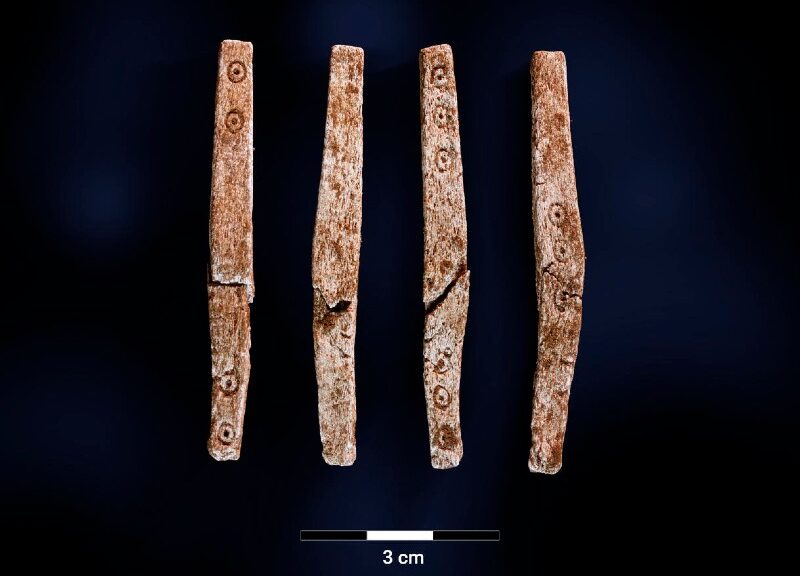Iron Age Dice and Game Pieces Unearthed in Norway
In western Norway Archaeologists have found unusual elongated dice and board game pieces from the Roman Iron Age.

Norwegian archeologists agreed last month to dig up the remains of a small cairn of the early iron age in western Norway. Dotted with monuments and grave mounds, the scenic location overlooking Alversund played an important role in Norwegian history.
The site at Ytre Fosse turned out to be a cremation patch. Amidst the fragments of pottery and burnt glass, archaeologists found a surprise: rare Roman Iron Age dice and board game pieces.
“It’s amazingly exciting. Such findings were not found in Norway and Scandinavia many years before. The special thing here is that we have found almost the whole set including the dice,” said Morten Ramstad from Bergen University Museum to NRK.
A status symbol
Archaeologists also found the remains of what was likely a powerful person. The nearby Alverstraumen straight was an important point on the sea route between the north and south of Norway. This was named Nordvegen, the northern way, from which Norway takes its name.

The bone debris, carefully decorated pottery, and burnt glass indicate the person cremated here was likely of high status. But it’s the gaming pieces that highlight this more than anything else.
“These are status objects that testify to contact with the Roman Empire, where they liked to enjoy themselves with board games. People who played games like this were local aristocracy or upper class. The game showed that you had the time, profits, and ability to think strategically,” said Ramstad.
The gaming discovery
The pieces are of a very rare type, known to be from the Roman Iron Age, dated to around AD 300. The haul included 13 whole and five broken game chips along with an almost completely intact elongated dice.

The dice are marked with number symbols in the form of point circles and have the values zero, three, four, and five. Less than 15 of these have been found in Norway. Similar dice were found in the famous Vimose weapon-offering site at Fyn in Denmark.
Strategic board games
The gaming board at Vimose was also preserved, so we have some idea of what board games may have been played during the period in Scandinavia. Inspired by the Roman game Ludus latrunculorum, board games seem to have been a popular hobby amongst the Scandinavian elite of the time.
These games are an early relative of the more famous board game Hnefatafl played during the Viking Age. The strategy game was likely played for enjoyment or even strategic training on long ocean voyages. Hnefatafl pieces found recently on Lindisfarne suggest Vikings travelled with the game.
“Finding a game that is almost two thousand years old is incredibly fascinating. It tells us that the people then were not so very different from us,” said Ramstad.
The results from the Ytre Fosse excavation should contribute to more precise data on the chronology of dice and gaming pieces in Early Iron Age Norway. With further study, we could learn more about the significance and social impact of gaming during these times.
“This excavation connects Norway to a larger network of communication and trade in Scandinavia. At the same time, the findings can help us to understand the beginnings of the Iron Age in Norway,” said archaeologist Louise Bjerre.
The findings will now go to the University lab in Bergen to be preserved. Archaeologists hope that the bones and objects from will in time be exhibited to the public.

Archaeology in western Norway and beyond
The University of Bergen’s Department of Cultural History aims to research, collect, conserve, and communicate. Their Bergen museum exhibits objects from prehistory, Norwegian folk art, church art, and ethnographic items from across western Norway.
The museum’s collections also include the archaeological finds from medieval Bergen, located at Bryggens museum.
